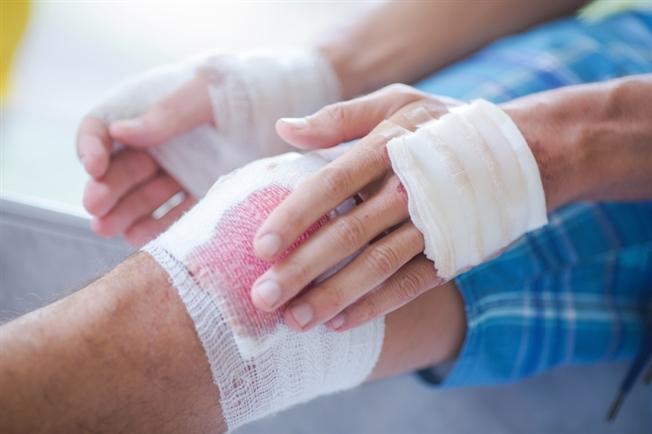How to treat severe bleeding

If you or someone around you has been wounded or is severely bleeding, the first thing to do is call 911. A trip to the closest emergency department or trauma center will ensure you or the injured party gets the level of care needed following an accident or injury. But, in the meantime, what should you do?
Below, Ehyal Shweiki, MD, FACS, trauma surgeon at Lankenau Medical Center, part of Main Line Health, offers step-by-step instructions for bystanders on how to treat and care for a severe bleed as you wait for emergency help to arrive.
First, remove dirt or debris
Following an open wound, assess how much bleeding is involved. If there's not a significant of bleeding, clean the wound as best as possible by removing any clearly visible dirt or debris. This helps prevent infection. You should not, however, try to dislodge any large or deeply embedded items from the wound like glass or metal, as this can cause the bleeding to worsen.
If there is significant bleeding from the wound, take the precautions outlined below about how to “Stop the Bleed.”
Elevate the affected body part
If the wound is located on the arm or shoulder, raise it above the heart as effectively as possible. The person who is injured may need assistance keeping it elevated. If the wound is located on the leg or below the torso, lie down and elevate the body so that the affected area of the body—like the leg, foot or ankle—is above the heart.
“Elevating the wound so that it is positioned above the heart can help to reduce the blood supply to the wound site and, as a result, reduce bleeding,” explains Dr. Shweiki.
While elevating limbs is an accepted part of wound care, Dr. Shweiki says there’s one exception: broken bones.
“If you suspect there may be broken bones as part of the injury, avoid moving the affected extremity which could displace the injury.”
Stop the bleed
Once a wound has been cleaned and, if necessary, elevated, you can continue to care for the injury using the following steps outlined in the Department of Homeland Security’s Stop the Bleed protocol:
- Apply pressure to the wound using both hands
- Apply any kind of clean, accessible dressing nearby—like gauze, a bandage or clothing—to the wound and add more pressure
- In many cases, applying pressure to the wound and dressing it will be enough to stabilize an injured person until EMS personnel arrive. However, in more serious cases, a tourniquet may be used.
- If needed to stop bleeding, apply a tourniquet two to three inches above the injury to stop bleeding. The tourniquet can be applied over the clothing. If bleeding continues, confirm proper application of the tourniquet and place a second tourniquet closer to the torso.
While bandages are included in many first aid kits, tourniquets may not be. Check your first aid kit to make sure a few tourniquets are included. Having appropriate equipment will ensure you’re prepared to respond to an emergency.
Lankenau and Paoli are now 'Stop the Bleed' bleeding control training sites. Several staff members are trained to be instructors for education courses on bleeding control, and the hospital has received funding from the Women's Board to purchase training materials and equipment for the course, as well. This education is part of Main Line Health's injury prevention efforts as accredited trauma centers.
Reapply dressing
If blood has soaked through the first layer of dressings or bandages, do not attempt to remove or replace them with a new layer. Instead, add additional layers of dressing on top and continue to apply pressure.
Trauma care at Main Line Health
A traumatic injury or life-threatening event can happen at any time, day or night. That’s why Main Line Health offers around-the-clock trauma care at our two trauma centers—Lankenau Medical Center and Paoli Hospital in the Philadelphia suburbs. Whether you need emergency surgery, or constant monitoring in the intensive care unit (ICU), our team works together to manage your condition from start to finish.
 Content you want, delivered to your inbox
Content you want, delivered to your inbox
Want to get the latest health and wellness articles delivered right to your inbox?
Subscribe to the Well Ahead Newsletter.
